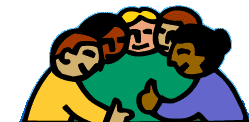Teaching Philosophy
As a middle school teacher, I engage in the process of examining and refining my teaching philosophy every day. After spending almost two years in my own classroom, I find that theory
and philosophy often bump up against reality.
I
can frame my teaching philosophy best within a three-part framework. (Adapted from Paul Eggen and Don
Kauchak's Educational Psychology: Windows on Classrooms: "Learner," "Learning," and "Classroom Processes.")
The Learner
I
find that the “learner” often gets lost in everyday pressures of planning and instructing. When lessons go wrong or students are off task, the teacher is often to blame for losing sight of the “learner.”
As a result, I believe that a teacher must give deliberate and conscious thought
to: how learners develop, the differences between learners, and the integration of exceptional learners into planning, teaching,
and assessment practices.
Personal experience has shown me the dangers of trying to skip steps in my own learning process. In the classroom, I also have discovered the danger of moving through a lesson too quickly or without a
good foundation. These missteps have taught me that the most effective way to
help students achieve mastery of objectives is to plan and deliver lessons that build on existing knowledge and earlier instruction.
I
have observed the positive effects that students receive from social interaction in the process of their cognitive development. As a result, I believe that a teacher’s key responsibility is to model, encourage,
and facilitate a positive learning environment. I include numerous opportunities
for student leadership and interaction in my classroom routine and cooperative learning activities in my lessons.
As
I see it, teaching that focuses on an individual’s potential rather than on his or her problems can increase that potential
well as the social interaction that.
My
first full year of teaching made me acutely aware of the wide variety of learning differences in every classroom. Howard Gardner’s view of multiple intelligence(s) provides one way for teachers and students to address
diverse learning issues. I also am interested in Robert Sternberg’s somewhat
different concept of three types of intelligence: practical, creative, and analytical.
In many cases, this construct might prove more manageable for a classroom teacher than that proposed by Howard Gardner.
In
any case, I feel that teachers need to consider everything in the light of students’ (and teachers') varied learning
styles - classroom appearance, classroom management, teaching style, lesson planning, and assessments. Of course, accounting for diverse learning styles has special relevance for any teacher presenting instruction
in an inclusion classroom.
I
agree with those who express concerns about the inaccuracy and inadequacy of measuring intelligence and accomplishment through
standardized tests. However, I understand the difference between theoretical
objections and the realities that exist in today's world.
Learning
My
experience so far has shown that appropriate and effective classroom learning conditions can provide all students with a rigorous
education. Teaching Advanced, on level, and inclusion classes has made me appreciate
Benjamin Bloom’s concerns for problems inherent in separating out a “gifted learner” population. I am aware that social and parental pressures on this program are significant.
I
feel that assessments should provide a wide range of opportunities for demonstrating success in learning. At the same time, I see the development and delivery of assessments as a challenge for new and experienced
teachers alike – especially when exceptional learners are involved. Research
by Robert Sternberg indicates the teachers can have a tendency to more favorably evaluate students who mirror their thinking
styles.
